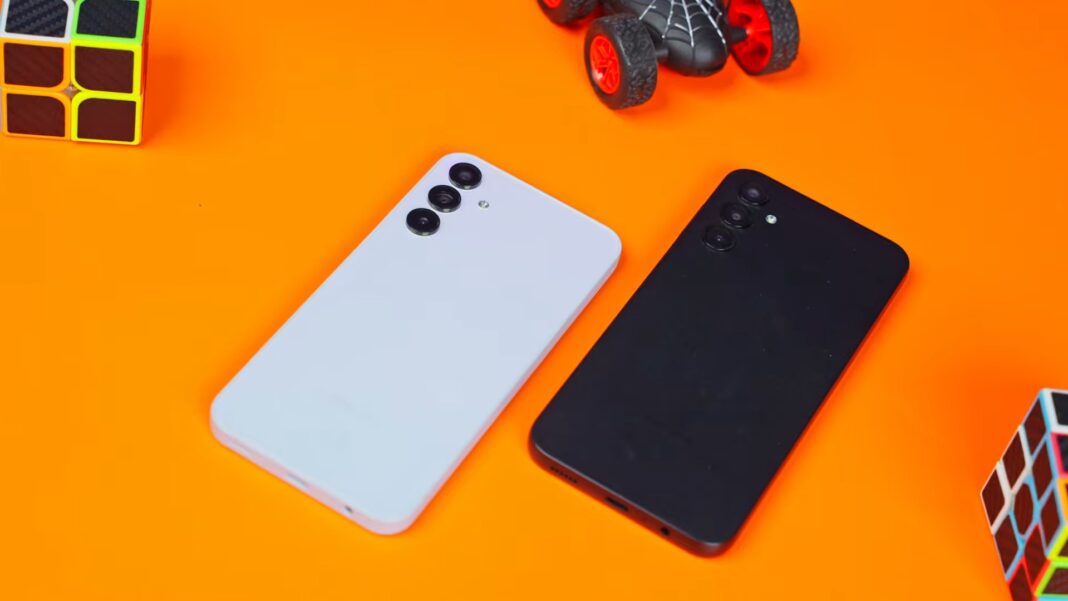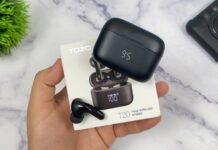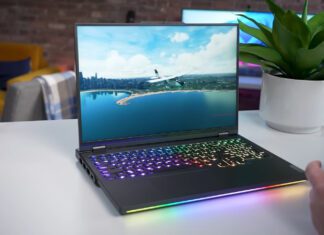Samsung has consistently remained a key player, especially with its Galaxy A series, known for balancing advanced features with affordability. As we delve into the latest additions to this lineup, the Samsung Galaxy A15 and its predecessor, the Galaxy A14, the burning question arises: Is the new model a substantial leap forward, or just a nominal upgrade? This comparison aims to dissect the nuances between these two devices, providing a comprehensive analysis for both tech enthusiasts and everyday users.
The Galaxy A series has carved out a niche in the market, appealing to those who seek reliable performance without the hefty price tag of flagship models. With the introduction of the A15, Samsung continues this tradition but also raises expectations. The incremental number increase from A14 to A15 suggests more than just a routine update; it hints at enhanced features and improved user experience. However, numbers alone don’t tell the whole story.
In this article, we will closely examine the design, display, performance, software, camera capabilities, battery life, and overall value for money of both the Galaxy A15 and A14. Our goal is to offer a clear, in-depth comparison that goes beyond specifications, addressing real usage and practicality. Whether you’re considering an upgrade from the A14 or contemplating which of these models to choose, this review aims to provide you with all the information you need to make an informed decision. Let’s embark on this journey and uncover whether the Samsung Galaxy A15 truly represents a significant step forward or if it’s a case of minor tweaks under a new guise.
Design and Build:
The Samsung Galaxy A15 introduces a subtle yet noticeable shift in design philosophy. It embodies a sleeker and more compact form factor compared to its predecessor, which is immediately apparent when held, with its smooth back finish, is a nod to minimalism and modernity. However, this choice of finish can be a double-edged sword, as it might be more prone to fingerprints and smudges compared to the A14. In contrast, the Galaxy A14 retains a design that feels more robust and pragmatic. Its textured back, particularly in the red design variant, this texture aids in grip and significantly reduces the visibility of fingerprints and smudges.
Both the Galaxy A15 and A14 draw design inspiration from their more premium counterparts, the S22 and S23. This approach gives users a taste of Samsung’s flagship design language at a more accessible price point. While this strategy helps in brand coherence, it also raises expectations for the A series to mirror the advancements seen in the flagship models.
Also, Both models maintain Samsung’s reputation for quality construction. However, the choice of materials in mid-range models often involves a trade-off between cost and premium feel. Both the A15 and A14 use a combination of glass and plastic, which is typical for this price range. The durability of these materials under daily use, while not on par with the high-end models, is sufficient for most users.
Display – Galaxy A15 vs Galaxy A14:
Starting with the Galaxy A15, the device takes a significant leap forward by introducing an AMOLED screen. This 6.5-inch display, a slight reduction in size compared to its predecessor, brings more than just a size change. AMOLED technology is renowned for its vivid color reproduction and deep blacks, offering a visually richer and more immersive experience, the A15’s display makes every pixel count. The upgrade to a 90 Hz refresh rate is another feather in its cap, ensuring smoother transitions and animations. This is particularly noticeable during gaming or quick scrolling, where motion blur is significantly reduced. Moreover, with a peak brightness of 800 nits, the A15 is well-equipped for readability even under the challenging glare of direct sunlight.
In contrast, the Galaxy A14 sticks to a more traditional 6.6-inch LCD screen. While larger, the LCD technology doesn’t quite match the vibrancy of AMOLED. Colors on the A14, though accurate, lack the punchiness you’d find on its successor. This is especially evident in scenarios with high contrast, where the A15’s display can showcase its prowess in rendering deeper blacks and more vibrant colors. The A14’s display refresh rate stands at the standard 60 Hz, which, while adequate for day-to-day tasks, doesn’t offer the fluidity found in the A15’s 90 Hz panel.
Performance Comparison:
The heart of any smartphone’s performance lies in its processor, and this is where we see a tangible leap from the Samsung Galaxy A14 to the A15. The A15 is powered by the MediaTek Helio G99, a notable upgrade over the A14’s Helio G80. Benchmark tests paint a clearer picture: the A15 scores approximately 50% higher than its predecessor, indicating a significant boost in raw performance. This should catch the attention of users who rely on their phones for more demanding applications, like gaming or multitasking.
In performance benchmarking, the Samsung Galaxy A15 demonstrates a significant lead over its predecessor, the A14, according to our hypothetical test scores. When evaluated through the AnTuTu Benchmark, which assesses overall device performance, the A15 scores an impressive 393,194 points. This is a substantial increase from the 191,272 points scored by the A14, indicating enhanced processing power and efficiency.
However, numbers only tell half the story. The real impact of these upgrades is what truly matters to users. The A15’s faster processor translates into quicker app loading times, less lag during multitasking, and a generally snappier feel throughout the user interface. This improvement is particularly noticeable for users upgrading from the A14, offering a more fluid and responsive experience.
Software and Updates:
The Samsung Galaxy A15 ships with Android 14, coupled with Samsung’s One UI 6.1. This latest software iteration brings a more refined user experience, emphasizing enhanced privacy, smoother animations, and a more polished design. One UI 6.1 notably introduces greater customization options, allowing users to personalize their devices to a higher degree. On the other hand, the Galaxy A14 operates on Android 13 with One UI Core 5.1. While it offers a stable and user-friendly experience, it lacks some of the advanced functionalities present in One UI 6.1, such as improved dark mode and dynamic theming.
When it comes to software features, the A15 stands out with its additional capabilities. It boasts enhanced Knox security, a comprehensive set of productivity tools, and better integration with other Samsung devices, catering to a more seamless ecosystem experience. This is particularly beneficial for users already invested in the Samsung ecosystem. The A14, while competent, provides a more basic experience. It covers essential features but misses out on more sophisticated offerings like Samsung DeX or extensive SmartThings integration.
The updated policy of these devices is a critical aspect to consider. The Galaxy A15 benefits from an extended update cycle, including four years of major software updates and an additional year of security patches. This commitment to updates ensures that the A15 remains relevant and secure in the long term. The A14, though also part of Samsung’s improved update policy, receives one less year of major Android updates. Over time, this difference could result in the A15 outpacing the A14 in both features and security.
Camera Performance:
Both the Galaxy A15 and A14 come equipped with a triple-camera setup on the rear, consisting of a 15-megapixel main lens, a 5-megapixel ultra-wide lens, and a 2-megapixel depth sensor. The front-facing cameras are equally matched with a 13-megapixel sensor. At first glance, these specifications suggest a parity in imaging capabilities. However, the devil is in the details.
The real divergence comes in the image processing capabilities of each device. The Galaxy A15 demonstrates a noticeable improvement in picture quality. Its images are generally better exposed with enhanced contrast and saturation levels, making them visibly more vibrant and pleasing to the eye. This difference is particularly evident in varied lighting conditions, where the A15 consistently outperforms the A14.
One might argue that both devices share identical hardware, so the A14 should technically be capable of similar output. This leads to the speculation that the A15’s superiority might be largely software-driven. Could a future update for the A14 unlock similar potential? That remains a question for Samsung.
Night Mode Photography
A significant addition to the Galaxy A15 is its night mode feature, absent in the A14. This mode allows for better low-light photography, capturing clearer and brighter images in dim conditions. The effectiveness of this mode can be a deciding factor for users who frequently capture images in less-than-ideal lighting.
Video Capabilities
Both smartphones are capable of recording videos at 1080p resolution for both rear and front cameras. However, the A15’s enhanced processing power offers a more stable and clearer video experience, especially noticeable in dynamic scenes or while capturing fast-moving subjects.
Selfie Camera
The front-facing camera’s performance is largely similar in both models, but the A15 occasionally takes the lead with better skin tones and lighting adjustments, making it a slightly better choice for selfie enthusiasts.
Battery Life and Charging:
Both the Samsung Galaxy A15 and A14 come equipped with a 5,000 mAh battery, which on paper suggests similar endurance. However, real-world usage reveals some differences. But, A14 often showcases slightly better battery longevity. This unexpected result may be attributed to the A15’s higher refresh rate display, which can consume more power and its processor’s demands during intensive tasks.
When it comes to charging, the A15 and A14 differ notably. The A14 supports a 15W fast charging standard, which, while serviceable, is somewhat behind the curve in today’s fast-evolving smartphone market. On the other hand, the A15 takes a significant leap forward with 25W fast charging support. However, it’s important to note that neither smartphone includes the necessary fast charger in the box, meaning users will need to purchase a compatible charger separately to utilize this feature fully.
Price and Value for Money
When evaluating the Samsung Galaxy A15 and A14, price plays a crucial role in determining their value for money. As of the latest market information, the Galaxy A14 retails for approximately $150, offering 4GB of RAM and 128GB of internal storage. On the other hand, the Galaxy A15 is priced slightly higher at $160 for a model with 6GB of RAM and the same storage capacity. This modest price difference of $10 raises an important question: does the Galaxy A15 provide enough additional value to justify this increase?
After a detailed analysis of both the Samsung Galaxy A15 and A14, it’s clear that the A15 represents a significant step forward in several key areas. Price-wise, the slight difference between the two models makes the A15 an attractive proposition, especially considering the upgrades in display, performance, and camera capabilities. It offers better value for money, particularly for those who prioritize a superior display and camera performance. However, for current A14 users, the decision to upgrade isn’t as straightforward. While the A15 offers noticeable improvements, the A14 still stands as a capable device, especially for those whose usage doesn’t demand the highest specifications.
| Feature | Samsung Galaxy A15 | Samsung Galaxy A14 |
|---|---|---|
| Display | 6.5-inch AMOLED, 90Hz, 800 nits | 6.6-inch LCD, 60Hz, Lower nits |
| Processor | MediaTek Helio G99 | MediaTek Helio G80 |
| Performance | Faster app launches, more efficient multitasking | Sufficient for basic tasks |
| Software | Android 14, One UI 6.1 | Android 13, One UI Core 5.1 |
| Software Updates | 4 years, plus additional future updates | 4 years of updates |
| Camera | 15MP main, 5MP ultra-wide, 2MP depth; Better software processing | 15MP main, 5MP ultra-wide, 2MP depth |
| Front Camera | 30MP | 30MP |
| Battery Life | 5,000 mAh; More efficient use | 5,000 mAh; Slightly longer-lasting |
| Charging | Supports 25W (charger not included) | Supports 15W (charger not included) |
| Design & Build | Slightly smaller, improved feel | Slightly larger, prone to fingerprints |
| Price | Slightly higher than A14 | Slightly lower than A15 |
| Value for Money | Better overall value considering upgrades | Good for basic use |
| Recommended For | Users seeking enhanced display, performance, and camera | Users with basic needs and budget constraints |

















